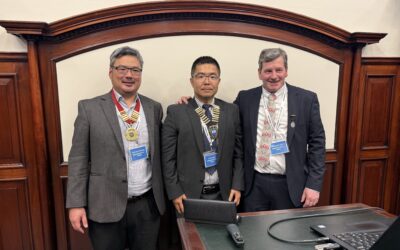60th Corrosion Science Symposium
The 60th Corrosion Science Symposium (CSS) this year was part of Electrochem2019 hosted by the University of Strathclyde’s Technology Innovation Centre, Glasgow. Electrochem is an annual meeting organised jointly by the RSC Electrochemistry Group and the SCI Electrochemical Technology Group, and over the past 15 years the CSS has joined the meeting as a parallel session. This joint Electrochem/CSS meeting gives a much broader platform for the U.R. Evans award and the Shreir Prize, and enhanced recognition for ICorr. The symposium is an ideal opportunity for students and younger researchers in corrosion science from across Europe to congregate, discuss their work, share ideas and, above all enjoy themselves in a stimulating/friendly environment. This year there were 15 presentations and the UR Evans award plenary talk, plus four posters over the two days. The symposium had a couple of key underlying themes: (i) electrochemical monitoring/sensing strategies; and (ii) polymeric coatings and surface modification.
Symposium talk highlights included, David Kumar (University of Bristol) who gave an interesting overview of his work on hot water corrosion issues related to fusion reactor cooling circuits. David explored the effect of simulated fusion reactor conditions on the reduced-activation ferritic-martensitic steel, Eurofer-97, which is Europe’s candidate for structural material in the water-cooled lithium-lead blankets. As well as aqueous corrosion, Eurofer-97 in a coolant loop will be subjected to high neutron flux, temperatures, pressures, and magnetic fields. Mariana Folena (University of Leeds) reported on her studies into the role of acetic acid in CO2 top of line corrosion using real-time corrosion measurements, where the corrosion response was characterised through the implementation of a miniature three-electrode setup developed for extracting real-time electrochemical measurement. Jessica Moulton (University of Manchester) gave a good overview into her recent studies modelling the behaviour of aluminium flakes in marine coatings using agar gels. Aluminium flakes can be formulated into marine coatings to delay the onset of cathodic disbanding, however the mechanism behind this affect is at present not fully understood.
The UR Evans award plenary talk was given by Prof Tetsuo Shoji from Tohoku University, Japan. The UR Evans Award is the Institute’s premier scientific award and is awarded annually in recognition of outstanding contributions to corrosion science and engineering. The award is in the form of an engraved sword and symbolises the fight in which we we are engaged. Prof Shoji’s talk was on the mechanics and mechanisms of stress corrosion cracking – the role of hydrogen as an all-round player. He reviewed the phenomenological understanding of cracking mechanisms along with the fundamental mechanistic understanding. Prof Shoji outlined recent atomistic modelling studies of metallic oxidation by water and suggested a role for hydrogen in the oxidation process linked with experimental observations, reporting hydrogen-vacancy cluster and diffusivity effects. For transition metals and their alloys, hydrogen is thought to play an important mechanistic role, such as in the interaction with surrounding atoms through electron transfer from the metal to hydrogen to form negatively charged/positively charged hydrogen, where atomic defects produce hydrogen-vacancy clusters and existing surface oxides form degraded(non-protective) oxides, with either grain boundaries or interfaces promoting diffusivity. Throughout his talk Prof Shoji often challenged the perceived wisdom and provided exciting insights into recent scientific achievements linked to the degradation and cracking issues associated with nuclear power generation.
The Shreir Prize which is awarded to the best oral presentation by a registered student at the CSS was won this year by Amelia Langley (University of Bath) for her talk entitled ‘Chaotic copper corrosion: the influence of dissolved gas on the anodic passivation of copper in model seawater’. Amelia discussed with great clarity and enthusiasm a proposed colloidal dissolution mechanism, linked to characteristic noise in voltammetry data. In addition, the influence of dissolved gas was explored where, more specifically, the effects of industrially relevant O2, CO2 and H2 were studied. Inert gas (He and Ar) and degassing (removal of gas) effects were also explored. The colloidal mechanism was demonstrated to be dependent on both the presence and type of gas, subsequently affecting anodic passivation to a lesser or greater extent, linked to the role of gases as surfactants.


